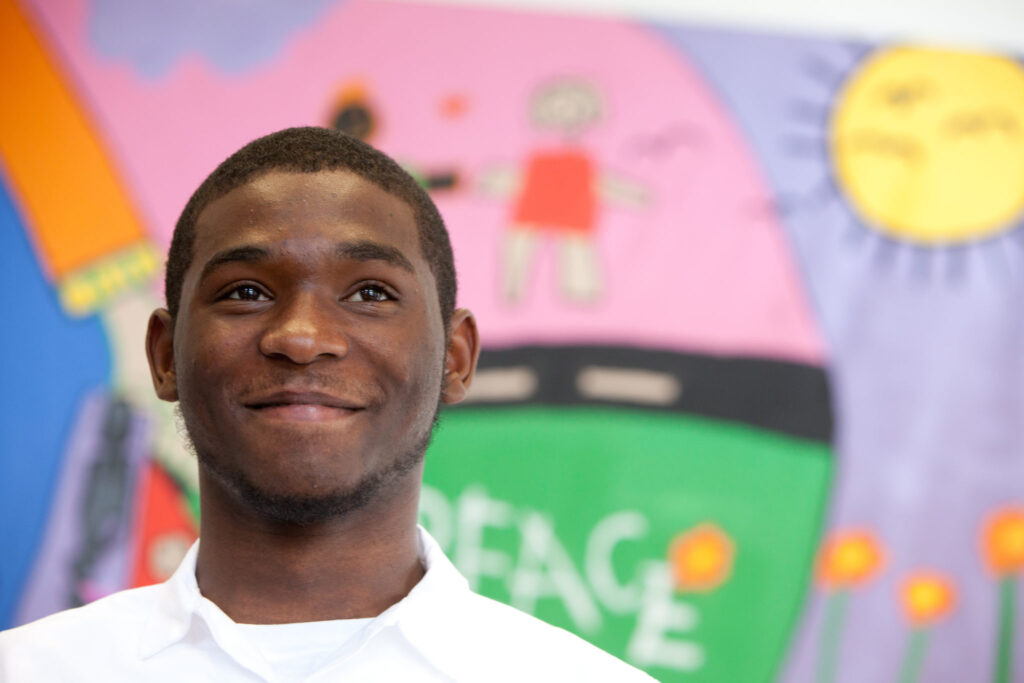Author: Rhonda Tsoi-A-Fatt, EdD
As we lift up National Youth Violence Prevention Week in the midst of a global pandemic, we acknowledge the role of youth voices and youth leadership in identifying root causes and solutions. Youth are assets to our community that we must nurture and empower. They are often closest to the problems that organizations are seeking to solve. In this compounded crisis, the lived experience of boys and young men of color (BYMOC) is vital to helping organizations navigate and rapidly respond with fresh ideas to the new challenges and needs BYMOC are facing.
There is no doubt that during times like these, BYMOC and their villages experience a heightened need for connection, protection, and affection. These needs are compounded by the current climate of increased food and/or housing insecurity, unequal access to healthcare, inadequate childcare, financial struggles, and lost instruction time. With so many issues bubbling to the surface at once, organizations are pivoting as quickly as they can (often with inadequate resources) to address these concerns. It is extremely important that we actively raise youth leaders to help steer the process. Their proximity to the concerns allows them to more clearly see and articulate their most pressing needs.
At Forward Promise, youth-led engagement is part of our mission to disrupt dehumanization and reclaim the humanity of BYMOC. When BYMOC have a sense of purpose and belonging, it changes the negative narratives and creates space for their healing and growth. Given the opportunity and means, young people can become powerful and influential leaders and advocates. We must recognize that they are vessels of untapped potential and fresh perspectives with the power to change and heal our world.
Below are some strategies organizations can use to intentionally engage youth in identifying and solving some of the problems they are facing:
- Engage youth who represent different points along the age range your organization serves.
- Consider ethnic diversity. BYMOC come from a plethora of cultural and ethnic traditions. Ensure you are representing the breadth of the ethnic diversity of your client base.
- Consider diversity in geographic location. Are there significant differences in your target area? Select representatives from each area to help your organization with a fuller picture of the problem and the solutions.
- Acknowledge and hold space for LGBT BYMOC. Their voices and perspectives are often absent or ignored. Working with and for BYMOC must mean all BYMOC.
- Allow BYMOC to take up space. Consider the number of BYMOC present in group discussions. Decision-making groups should include your target audience.
- Support BYMOC to use their voices effectively and prominently. If youth are invited to serve on a committee, for example, meet with them to build relationships in advance of the first committee meeting. Introduce them to other youth who also serve on the committee. If youth are participating on a panel, provide space and guidance for preparation. If youth are leading an effort, ask what you can do to be supportive in the background.
- Pass the mic. Actively dismantle the idea that young people should be seen and not heard. Consider the ways in which your organization can intentionally provide opportunities for BYMOC to speak up at meetings of any size. Make them a part of working groups, reporting out, and opening/closing remarks.
By communicating openly and actively listening to the voices of youth, we can identify and address the root causes of the issues facing BYMOC, including youth violence. Let’s continue this conversation. What other ideas should we add to this list?
To learn more about National Youth Violence Prevention week and ways to continue this work throughout the year, visit www.nationalsave.org and www.citiesunited.org. Also, follow the hashtag #NYVPW.


